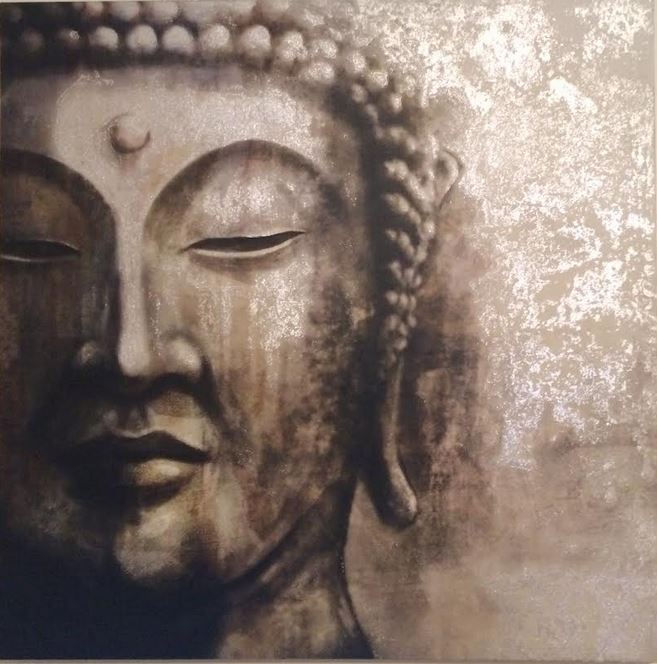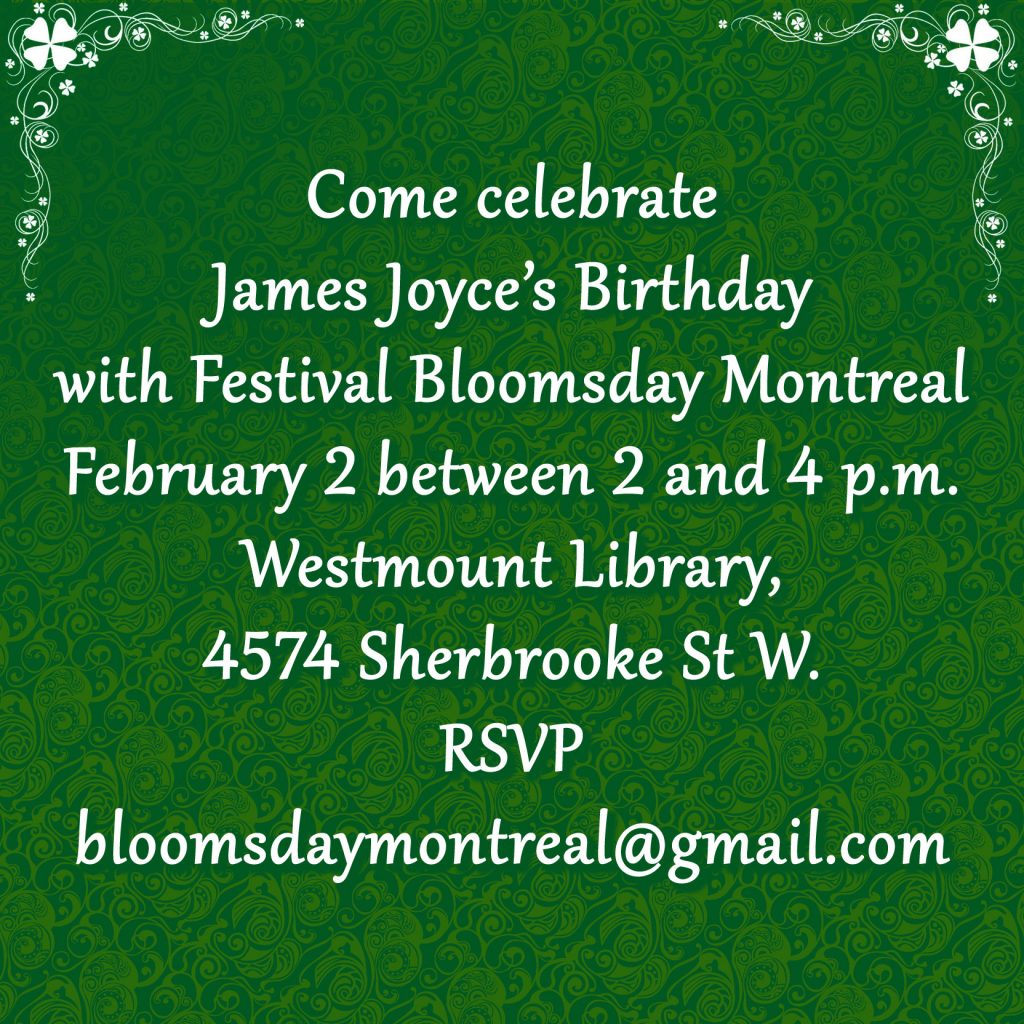From the moment I laid eyes on the book William Blake by Kathleen Raine I knew that I had to have it. I was immediately hooked by the artwork of Blake (1757-1827) whose images slowly revealed themselves to my mind’s eye like those cunning illusions in the Magic Eye books I so loved as a kid. This had also been my experience of reading Joyce’s Ulysses, multiple times.
One work of Blake’s that particularly intrigued me was the illustration The Sea of Time and Space (Vision of the Circle of the Life of Man) that he produced in 1821 for a translation of the Greek philosopher Porphyry’s (c. 234 – c. 305) De Antro Nympharum (Raine 164). I was not familiar with either work, but I was so intrigued by the figure in red whose hands hover over the sea. Is he performing some type of Moses-like magical act, and is this performance a benediction or a curse?
To my surprise, the figure in red is in fact, god-like Odysseus; in this image he has just thrown away (to return) a girdle lent to him by a sea-nymph (who saved him from a near-drowning) and if he were to keep the girdle, it could offer him immortality (164). We can read this act as a rejection of immortality in favor of a life lived in the body incarnate. Remind you of anyone? Odysseus’ decade long odyssey after the Trojan war (or read allegorically, a mental voyage through the human psyche) is soon to come to an end. He chooses to return home to Ithaca, and Penelope (he will return to himself).
Behind god-like Odysseus stands the figure of Pallas Athene, or the ‘grey-eyed goddess’. She is “pointing to the heavenly world, from which souls ‘descend’ into generation, to be woven into the mortal garments by the nymphs of the Cave, working at their looms and shuttles” (164). If this life-cycle is repeated after a soul’s death, wouldn’t this illustration represent metempsychosis?

The Sea of Time and Space (Vision of the Circle of the Life of Man). William Blake, 1821. Photo from Wikipedia Commons.
Porphyry’s De Antro Nympharum (which is the text Blake made the illustration for) is an analysis of the allegorical meaning behind a passage found in Book XIII of the Odyssey. In this passage, Homer writes about a shaded cave in Ithaca, with water forever flowing (note that water is an often-used esoteric symbol for materiality). This cave has two mysterious entrances. The north entrance is for humankind, through which people enter into the material world, and the south entrance is for the gods, which is forever barred from humankind (The Odyssey of Homer, Book XIII, lines 102-112).
At the head of the harbor, there is an olive tree with spreading
leaves, and nearby is a cave that is shaded, and pleasant,
and sacred to the nymphs who are called the Nymphs of the Wellsprings,
Naiads. There are mixing bowls and handled jars inside it,
all of stone, and there the bees deposit their honey.
And therein also are looms that are made of stone, very long, where
the nymphs weave their sea-purple webs, a wonder to look on;
and there is water forever flowing. It has two entrances,
one of them facing the North Wind, where people can enter,
but the one toward the South Wind has more divinity. That is
the way of the immortals, and no men enter by that way.
In the Blake illustration, we can see the nymphs in a cave-like structure under the figure of Odysseus, working on looms and shuttles, that is, preparing souls to enter into the material world (164).

Surface Waves by Roger McLassus. Photo from Wikimedia Commons.
The story of a ‘mysterious cave’ has manifested itself many times in human history. Consider Plato’s Allegory of the Cave where humankind is shackled inside a cave that is not representative of true reality or ‘ideal forms’. Instead, humans are imprisoned in their ignorance, and left to gaze at mere shadows of real images, all the while believing what they see to be real. Porphyry was himself a Neoplatonist, and he believed that reality emanated from a single principle called ‘the one’.
I think that another manifestation of the cave story can be found in the Nausicaa passage of Ulysses, which opens with, “The summer evening had begun to fold the world in its mysterious embrace. Far away in the west the sun was setting and the last glow of all too fleeting day lingered lovingly on sea and strand…at times upon the stillness the voice of prayer to her who is in her pure radiance a beacon ever to the storm-tossed heart of man, Mary, star of the sea” (Joyce 449).
In this passage, Joyce portrays the Earth as the mysterious cave of materialism, darkened by the approaching night (which is a repetitive cycle) and three nymphs are presented. There is Cissy Caffrey and Edy Boardman who care for their siblings, including little Tommy and Jacky Caffrey, comically dressed in sailor suits, who I think are meant to represent the sea-faring Odysseus and his crew.
And, there is another nymph, Gerty MacDowell. She seems uneducated and overly consumed with vanity, which she thinks is a source of a woman’s power, at least her own. Bloom spots her on the strand, and the two experience a mental connection and size each other up quite accurately, each understanding the other’s pain. Through Gerty’s charged sexual energy, Bloom experiences an orgasm in the ‘cave’, and this could be read as a success given that he has failed to achieve this release at other points during the day.
But is it really? Is the ‘mystery of the cave’ so easily solved through a mental union of mind between the female and the male?

Statue of Athena held by the Louvre. Photo from Wikimedia Commons.
Bloom has been on a mental odyssey of his own for a decade since the death of his son Rudy. One consequence of which is his impotency in the marital bed. But over the years, Bloom has preyed on young and vulnerable women, and used them as a sexual outlet. He seems to have used his authority to prey on a maid in his employment when he lived on Ontario Street, and there’s the emotionally vulnerable Martha whom he lies to by using a fake name, and whom he strings along with no real intention of ever meeting. Why?
Then there’s the young nymph-like Gerty, whose image and energy Bloom exploit in order to achieve an orgasm. Some readers may see this as a success on the part of Bloom, who can be read as connecting with some essentially feminine esoteric knowledge, or ‘mystery of the cave’. But, Gerty is flawed. The image of herself as a ‘true beauty’ can never come to pass as she has an ugly and incurable limp. And I think that beauty is a false power, imposed on women like a death sentence, one which prevents many from ever coming to realize who they truly are, or what power they truly have to offer.
Consider the famous missing letter ‘T’ in the word ‘hat’ which Bloom notices as he shifts a card hidden in his ha in the text of Lotus-Eaters, “Very warm morning. Under their dropped lids his eyes found the tiny bow of the leather headband inside his high grade ha… His fingers found quickly a card behind the headband and transferred it to his waistcoat pocket” (Joyce 86).
Bloom’s clandestine mental affair with Martha gives him a cheap thrill (that’s the card he’s hiding in the hat) but he feels guilty about it, and guilt causes stress, which in turn causes sweat. Is this sweat, caused by the repetitive overuse of the hat, and the guilt and cheap thrill he experiences in exploiting women, symbolized by the missing ‘T’? There’s a flaw in Bloom, and he doesn’t recognize it per se, but he knows something is amiss. To the casual reader, this clever wordplay by Joyce may only read as a metafictional device that elicits a thrilling feeling of comradery with the cheating Bloom.
But I think this absent ‘T’ also represents Bloom’s loss of connection with the material world (his mental odyssey, and bereavement at the loss of a son (which could also be read as the loss of youth, or aging)) as symbolized by his impotency in the marital bed with Molly. All day long he thinks about Molly’s bodily affair with Boylan which he knows will take place that afternoon, yet does nothing to stop it. Some readers claim that Bloom is a loving husband who wants his wife to experience a physical union he can no longer provide her with. But, another reading of this is that Bloom is a coward, one who cannot confront the psychological reasons for his marital impotency, so he doesn’t confront his wife simply because he can’t. Only once he recognizes that this missing ‘T’ in his life is his connection to the material world, through his wife’s body, will he be able to come to grips and end his mental odyssey. That is, he needs to return to the marital bed, and to Molly. He needs to regain his manhood, and only Molly can truly provide him with this return, to Ithaca so to speak.
I’m struck by the number of references to the color gold in Nausicaa because the Linati schema attributes the colors grey and blue to this passage. Why? My guess is that blue is the water and esoteric symbol of the material world that Bloom is mentally traveling through, yet somehow disconnected and exiled from, as exhibited in Nausicaa. And, Athena is known as ‘the grey-eyed’ goddess in the works of Homer, and as Molly is the symbolic Athena in Ulysses, only she can truly facilitate this return to manhood. The color gold which litters the text of Nausicaa and culminates with a crescendo of bright fireworks is but fool’s gold. Nymph-like Gerty is a false-goddess, who offers only false release. Bloom’s anguished mental odyssey can only end if he makes like Odysseus and returns home, to the physical embodiment of his feminine half, Molly.
Consider a scientific manifestation of the story of the ‘mystery of the cave’. Carl Jung (1875-1961) describes the human mind as a cave. One aim of life, according to Jung, is to realize ‘individuation’, that is, to heal the fragmented mind and realize that ‘all is one’. Only by fully integrating the axis of our minds as a whole (persona-ego-shadow-anima/animus-collective unconscious) can we truly realize the fullest potential of ourselves, and thus end our anguish (odyssey) in life. Could this be the ‘true meaning’ behind the ‘poetical allegory’ of Homer’s cave passage?
Imagine life as a matryoshka (a.k.a. Russian) doll, you open it up only to find the same doll getting smaller and smaller, or bigger and bigger, if you’re closing it up. All is one. This is the path or ‘royal road’ I found myself walking along these past two weeks as I started investigating Blake’s illustration. I’m struck by how my own knowledge of these great works of art and science, combined with my new knowledge, has lent itself to a better understanding of a book, and a mental odyssey of my own, that I’ve been reading and traveling through for years. Is this proof of Jung’s concept of synchronicity? It’s certainly been a serendipitous odyssey all my own.
Homer. The Odyssey of Homer. Translated by Richmond Lattimore, Harper Perennial Modern Classics, 2007.
Joyce, James. Ulysses Annotated Student Edition. Penguin Books, 2011.
Raine, Kathleen. William Blake. Oxford University Press, 1970.



Recent Comments